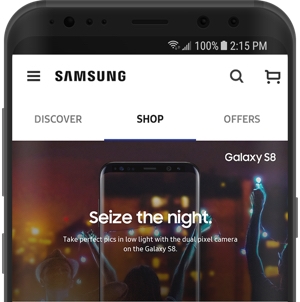Galaxy phone or tablet stuck at Samsung logo screen
If the customer’s phone or tablet won't boot past the logo screen or is unresponsive, verify that it has only been charged using the supplied USB cable and an approved Samsung wall adapter (sold separately). Then, inspect the device and charger for physical or liquid damage.
Service is only required if the following steps have been completed and the issue has not been resolved.

Checkpoint
- A
- B
- C
- D
Inspect the device for physical damage.
To inspect the device for physical damage:
- Look for scratches, cracks, or other damage on the front and back of the device. Obvious cracks on the screen are usually due to an impact on the front of the device.
- If the device has a round spot of dead pixels, it may have been subjected to a more gradual pressure that left the front glass intact, while damaging the screen underneath.
- Ensure the connectors in the charging port are not corroded, bent, broken, or pushed in. If you have a removable battery, check the battery connectors as well.
Inspect the device for liquid damage.
To inspect the device for liquid damage, check the LDI (Liquid Damage Indicator) located either inside the SIM card tray slot for newer devices or on the removable battery for older devices.
First, power off the device. For newer devices, insert the ejector tool that came with your device into the hole on the SIM card tray, and then push the tool until the tray pops out. For older devices with a removable battery, remove the back cover.
Important: Be careful not to insert the ejector tool into any of the microphone or speaker holes along the edge of your device. Look for the outline of the tray to make sure you're in the right place.

Look inside the slot to access the LDI. If your device has a removable battery, take out the battery and inspect it. LDI indicators should be solid white or white with visible pink or purple X's. If the device has been exposed to moisture, the LDI will be solid pink, purple, or red.
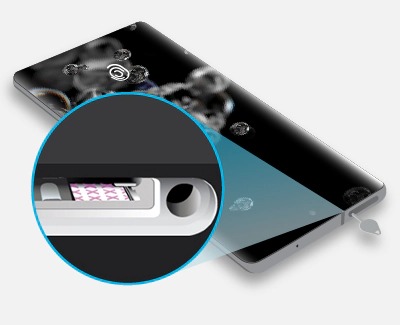
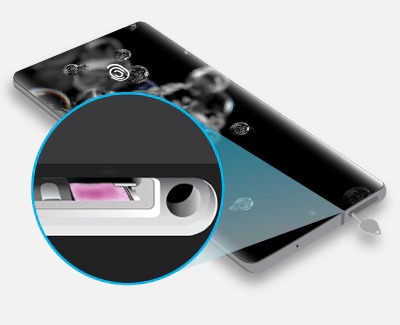

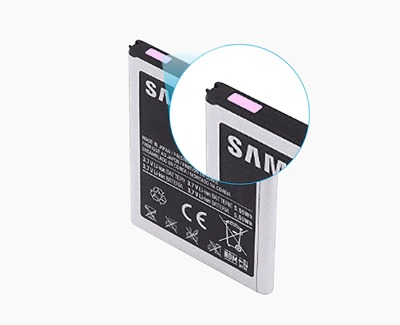
Verify the SIM card is properly installed.
With the SIM card tray removed, make sure that the SIM card is lined up with the smaller cutout on the SIM card tray. If your device has a removable battery, make sure the SIM card is lined up with the designated slot. The orientation of the metal contacts will vary by device. The SIM card will only fit correctly in one direction.

Verify the card is flush with the tray, then insert the SIM tray back into your device. If your device has a removable battery, push the SIM card into its designated slot, and then replace the battery and the back cover. Now, power on your device!

Contact Samsung Support.
Make sure your device has enough battery.
Make sure your battery is charged to at least 5%. If your battery is below 5%, the phone may not turn on after the reboot.
If the battery is completely drained, it should be charged for a minimum of 15 minutes using an appropriate Samsung charger.
Reboot the device.
Rebooting will be a little different depending on what model you have.
- Devices with a Power button: Press and hold the Volume down and Power buttons simultaneously for approximately 10 seconds.
- Devices with a Side button: Press and hold the Volume down and Side buttons simultaneously for approximately 10 seconds.
The Power menu may appear; just continue pressing the buttons until the Samsung logo appears.
Select Normal Boot.
Learn about Safe mode.
Certain downloaded apps can make your phone or tablet freeze, crash, or lag. Some apps can even affect camera functionality, cause audio issues, and affect network connectivity.
Using Safe mode disables all downloaded apps and loads only the original software that came with your phone or tablet, allowing you to determine if the issue is caused by an app or with the device itself.
If the issues do not appear while in Safe mode, the problem is caused by a downloaded app, and it should be uninstalled.
Reboot the phone or tablet in Safe mode.
First, open the Power menu:
- On devices with a regular Power button, press and hold the Power button until the Power menu is displayed.
- On devices without a dedicated Power button, swipe down from the top right of the screen to open the Quick settings panel. Tap the Power icon at the top of the screen.
Touch and hold Power off until the Safe mode icon is displayed. Tap Safe mode to start your device in Safe mode. If you've entered Safe mode successfully, you'll see “Safe mode” displayed at the bottom of the screen.
Check if the phone or tablet is still having the same problem.
Use the phone or tablet normally to see if the issue has been resolved. If the phone or tablet is operating normally, a recently installed app was most likely causing the issue.
- If the issue is gone in Safe mode: One of your recently downloaded apps was likely the cause of the problem. Proceed to Step 4.
- If the issue still exists: Downloaded apps may not be the cause of the problem. You may need to reset the phone or tablet to its factory setting.
Uninstall apps.
One by one, uninstall any apps you downloaded just before your phone or tablet began having the issue.
From your Home screen, swipe up to open the App drawer. Find the app you want to remove, and then touch and hold the app's icon until a popup menu appears. Tap Uninstall, and then tap OK to confirm.
After uninstalling each app, exit safe mode and check for normal operation.
After you uninstall the app that caused the issue, you can reinstall the other safe apps you just deleted.
Exit Safe mode.
First, open the Power menu:
- On devices with a regular Power button, press and hold the Power button until the Power menu is displayed.
- On devices without a dedicated Power button, swipe down with two fingers from the top of the screen to open the Quick settings panel. Tap the Power icon at the top of the screen.
Tap Power off to turn off the device. Wait until the phone or tablet completely turns off, and then press the Power button again to turn it on. Check if the issue has been resolved.
Download and install Smart Switch.
Connect your Galaxy device.
Open Smart Switch.
Install the update.
Check your phone or tablet after the update.
Perform additional troubleshooting.
If you are still having trouble updating your device with Smart Switch:
- Check your Mac or PC for software updates.
- Restart your Mac or PC.
- Remove and reinstall Smart Switch.
- Check the USB settings on your connected phone or tablet. It may be necessary to try a different USB port or USB cable, or use a different computer.
If you are still encountering issues, please visit a Samsung walk-in service center or you can schedule a repair service online.

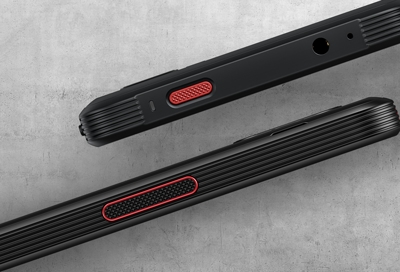
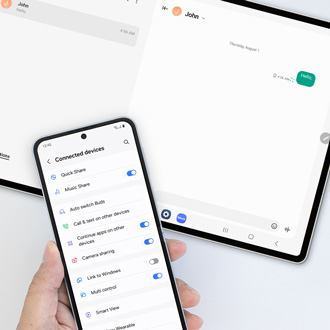
Thank you for your feedback! Your comment has been submitted.
Contact Samsung Support


- Home Home
- Support Support
- troubleshoot troubleshoot
- Galaxy phone or tablet stuck at Samsung logo screen Galaxy phone or tablet stuck at Samsung logo screen
